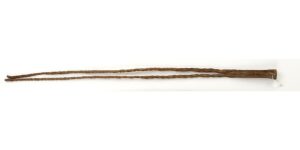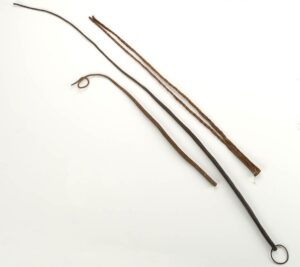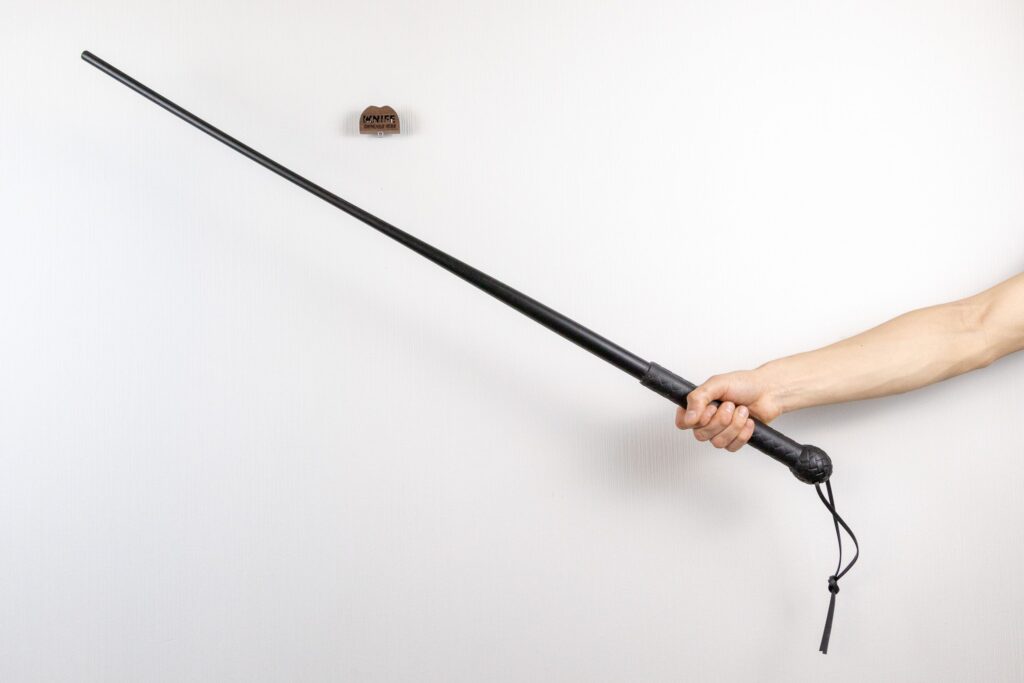The shambok is a traditional South African whip that has existed for centuries, but it became infamously known as the tool used by police in South Africa to disperse crowds of demonstrators, thus becoming a symbol of apartheid.

A Rare Two-tailed Variation
Shamboks are made from the skin of adult hippos (or rhinos). A strip measuring 90-150 cm is cut in such a way that one end forms a “handle” about 2.5 cm thick, tapering down to approximately 1 cm at the end. The thickness of the skin allows for this. The strip is then rolled between two steel plates to give it a round (as much as possible) shape. The resulting whip is elastic yet very rigid.
A plastic version of the shambok was also originally developed for police use when the demand for shamboks grew to the point that it became impossible to produce them from natural materials.

Police with Plastic Shamboks
The name “shambok” likely originates from the Indonesian word “sambok,” which referred to a wooden stick used for punishing slaves. At one time, the English brought many servants from Malaysia to South Africa, taking along both the instrument of punishment and its name. Wood was replaced by leather, while the word became entrenched in the Afrikaans language as “sjambok.” Interestingly, a related term, “chabouk,” meaning a whip for horses, is also used in India.

If the same tool is made from the skin of another animal, it is called “litupa.” In Swahili, a shambok is known as “kiboko” (the same term is used to refer to a hippo). In Portuguese-speaking Africa, shamboks were referred to as “chicote,” the term used for any whip.
The shambok is an extremely heavy tool used for herding cattle like a stock whip and also serves as a self-defense weapon. It is particularly effective against snakes, as it can easily sever them in half.
The shambok is simpler to handle than a classic whip and is more comparable to a stick. A light hit can leave a bruise, while a strong strike can penetrate flesh to the bone.

There was also a version of the shambok made not from skin, but from the penis of a hippo. This was sun-dried, with a weight attached to the end to elongate and thin it out. Once dried, it was cleaned and soaked in oil, resulting in a whip approximately 90 cm long. The shambok was used for judicial punishments and for urging slaves by the Portuguese, French, English, and Boers. It is still in use today for domestic punishments and controlling demonstrations. Although its use is banned in schools, incidents of its use do occur in private schools.

Scars from the Shambok

